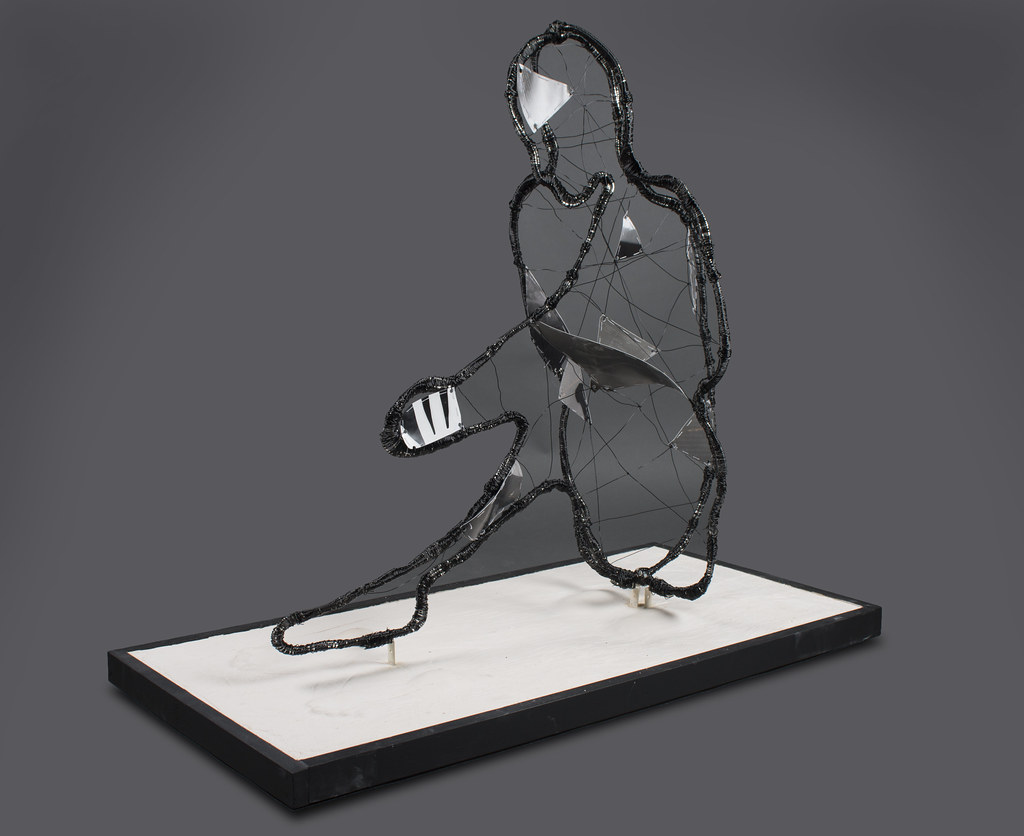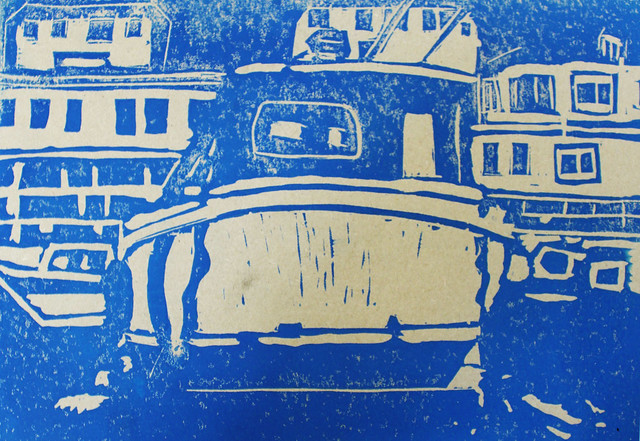Fine Art
Senior
The Art department at Kingswood School provides pupils of all ages with the opportunity to create exciting and unique artwork in a range of media, during timetabled lessons and independently in activity sessions. Examination results are consistently exceptional, and the School is proud of its artistic heritage and successes.
The Art department is generously housed in an attractive, detached period building, located over three floors. The building includes well-equipped specialist areas for drawing and painting, printmaking, sculpture, ceramics, and digital and traditional photography, as well as a dedicated studio for Sixth Form students.
A suite of 16 computers and an extensive art library provide opportunities for research and digital manipulation of imagery. The examination groups make numerous visits to galleries during the academic year. The highlight of the year is the annual Summer Exhibition held at the end of June, which showcases a wide variety of student artwork, with every examination pupil being proudly represented.
Key Stage 3
The department's ethos is to promote individual curiosity and the importance of drawing, in its broadest context. All pupils in Years 7 and 8 undertake a foundation course that covers the fundamentals of the subject while helping them to develop skills and confidence. Pupils learn the importance of seeing and recording through the experimental use of line, tone, mixed media, colour and three dimensions. In Year 9, pupils have the opportunity to work in much smaller groups to explore aspects of drawing, printmaking and sculpture.
GCSE
At GCSE level, pupils follow the AQA Fine Art specification. With two components, comprising a ‘Portfolio’ (60%) selected from the course of study and an ‘Externally Set Assignment’ (40%), pupils experience a range of creative opportunities to develop and explore their personal interests in art and design. Pupils are encouraged to independently investigate, create and communicate their own ideas.
At the start of Year 10, the coursework is narrowly focused before becoming more open-ended over the duration of the two-year course. There is no restriction on the choice of media, scale or format that pupils may use to reflect and evidence their Fine Art submissions. Development, refinement, recording, realisation and presentation of ideas are key to success at GCSE level.
Please see a selection of GCSE artwork below.
A-Level
A-Level pupils follow the OCR Fine Art specification and are encouraged to take risks and develop as artists. The two-year linear course is made up of two components: a 'Personal Investigation' (60%) and an 'Externally Set Task' (40%).
The Personal investigation has two integrated elements: a portfolio of practical work and a related study which explores the context in which pupils' chosen practical area of study exists. Pupils can investigate one or more areas of study, such as Portraiture, Landscape, Still Life, Human Form, Abstraction, Experimental Imagery, Narrative, Installation or Working in a Genre. Pupils are encouraged to independently explore, research and acquire techniques and develop their skills, knowledge and understanding in a range of Fine Art media.
Please see work produced by this year's Upper Sixth below.
As both a photographer and artist I have incorporated my love of photography within the subject throughout the Sixth Form to create Fine Art outcomes.
Throughout my photography, I have focused on the use of the female form as a compositional tool and the ways in which this can effect an image, inspired by the works of photographers such as Irving Penn and Amber Asaly. Experimenting within Photoshop to manipulate the image further has become increasingly important. I feel that my skills within creative directing have developed significantly as a I have challenged both my technical photography skills. The planning of shoots in the pursuit to portray a particular narrative within my images has become paramount in my artwork.Whilst initially drawn to the spontaneity of Street Style fashion photography and shooting on location, recently I have found a new love for studio work. My exam project has involved experimenting with the use of gel lighting and how altering colours within lighting can alter the mood and narrative of the image.

During the Sixth Form, I have been able to experiment with a range of media. Whilst currently there are few if any noticeable similarities in the style of my artwork, I have really enjoyed being able to display more of myself as a person through the pieces I have created.
Narrative has been a key theme throughout my work and ties in closely with my childhood in London, a period of my life which I believe has influenced my creative ideas greatly. Physical objects and their significance are a driving interest in my research. The audience can appreciate the general themes, but my artwork has an intentional exclusivity meaning that it can be accessed fully by me, which makes it that much more valuable in my eyes.

My work focuses on video games which I use to explore topics such as mythology and Japanese culture by creating digital illustrations, animations and playable demos.
I enjoy giving life to my drawings, and so far, the medium of video games have given me the most freedom to do so. I want my work to resonate with people all around the world, no matter their culture or gender, and explore different and exciting themes together. Therefore, I will continue to follow my passion and convey my feelings in the art I create.

My interest in portraiture reflects how fundamental ‘identity’ is to my artwork.
Having strong cultural roots has led me to explore the constraints of society on individuals; not only through how society views us, but how societal beliefs impact how we view ourselves. As a result, mirrors and reflections have become integral to my project. However, the significance of the full body has also become important to my work, as I explore the erasure of Black bodies within Western Art history. My principal aim is to insert individuals into a society that has historically excluded them, and to explore the dichotomy in culture that pervades my daily life. One way I am doing this is by moving into using oil paint over acrylic, as the high historical status of the former elevates the (degraded) status of the figures I paint.

My work reflects my interest in art installation and sculpture as inspired from my curiosity in architectural construction.
Using a mixture of medium such as thread, wood and metal I have been able to create structures that explore negative space and movement through the linear qualities of thread. This idea of movement has sparked directional decisions within my art such as placement from multiple points which can relate to contemporary architecture today. A common theme of invisibility has progressed throughout my project to look at the subtleties presented to you, as well as beneath surfaces of objects.

In my work I like to express art in a differentiated way to the norm, unlike a standard paintbrush or pencil.
I have discovered skills that I never knew I had such as the use of an airbrush as well as presenting my art through sculpture. I invest a lot of consideration into the materials that I chose to combine in order to form something unusual and unique. Artists that have inspired me and influenced my work immensely have been Antony Gormley and Yves Klein. Both have unusual an individual approaches that I have taken and grown my own ideas from. Scale has been an important element in most of my work. I tend to go with my creative intuition with my artwork and I like to try anything that is thrown in front of me as I love to learn and grow as an artist.

Holistically, through both my coursework and exam piece I have incorporated my interest in the human figure and the ability to invoke an emotive response, both positive and negative from the viewer.
My preoccupation with distortion in my coursework allowed me to experiment with a breadth of materials and styles, drawing influence from photographers and artists such as Gillian Lambert and John Stezaker. This allowed me to discover that my attraction to the topic stemmed from its ability to create controlled chaos establishing the viewer’s unease. To conclude I constructed an installation which incorporated many aspects and techniques including spray-painting and a large detailed biro sketch which was the focal point of the piece. For my exam project, I investigated symmetry through reflection within the human figure, casting replicas of my subjects hand and incorporating mirrors in order to achieve a double aspect.

I am both a model maker and a sculptor; my work primary focuses on mixing Fine Art with Architecture, where I use different materials such as wood, plaster and acrylic to explore the connections between deconstructive Architecture and distortion in Art.
Through my passion for model making, I have investigated various ways in which imperfect Architecture is significant in the modern society. My experimentations with deconstruction and transformation as the main focus, ultimately has led me towards my final outcome, constructing an interactive model.


My artwork is primarily technique based, focusing on the process of development and the sense of journey.
Through multiple mark-making processes and layering to create an overall composition, I combine numerous narratives within my artwork. The nature of the process involves continuous decision making throughout, which is an element that has really inspired my work. I also like to work on large scale format to explore elements of risk taking and spontaneity. My artwork expresses the variety of potential that Abstraction and multiple decision making can represent.
I recently chose to explore my Grandad’s dementia and articulated his struggle with the illness through collaging imagery of memories together, highlighting the idea of the merged thoughts and sense of confusion. My artwork also explores the idea of social identity and complications within society. I reinforced this idea through a sense of reflection in life, captured in my window photographs. This acted as a metaphor of looking back on life and seizing the moment, within social environments, expressing the importance of family and friends.




